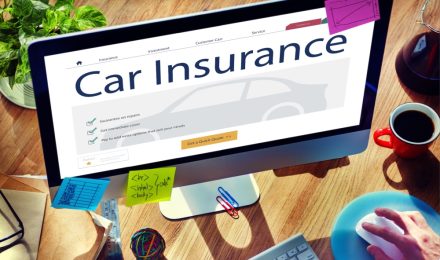Embarking on the journey of purchasing your first auto insurance policy is a significant decision. As stated by the Insurance Information Institute, every state mandates that vehicle owners possess liability insurance to safeguard both themselves and others in the event of an accident. Your state may also require additional types of coverage such as uninsured motorist protection, personal injury protection, medical payments coverage, and physical damage coverage. Navigating through the myriad of coverage options for your first auto insurance can be daunting. Here are some streamlined tips to help you begin:
Explore Different Options
When searching for car insurance quotes, encountering surprisingly high rates is common. These costs can vary significantly due to insurer policies and personal driving preferences. While seeking affordable car insurance can sometimes feel futile, there are strategies to streamline the process. Negotiating for a better rate is crucial.
For new drivers or those unfamiliar with auto insurance shopping, beginning the search can be challenging. Seeking advice from experienced drivers, like parents or guardians, is a wise first step. Nowadays, numerous websites offer the convenience of comparing quotes from multiple providers in one place, making it easier to find suitable coverage at a fair price.
Considering a higher deductible is another effective way to reduce your premiums. A larger deductible could lead to substantial annual savings without compromising coverage. Although it may appear insignificant initially, the savings accumulate over time. If your current plan limits your mileage significantly, it might be worth considering an upgrade.
Understand Your Deductible
Every auto insurance policy includes a deductible, which can range from as low as $100 to several thousand dollars. This is the amount you pay out-of-pocket for any claim. Common deductibles are $500, $1000, and $2500. Choosing the right deductible depends on your circumstances.
A higher deductible suits those who prefer lower monthly premiums and can manage out-of-pocket expenses in case of an accident. Conversely, a lower deductible might be better if you have sufficient emergency funds or prefer to align it with your high-deductible health insurance plans.
It’s essential to assess which auto repairs are manageable and which would significantly impact your finances. To save in the long term, consider an extended warranty or additional coverage for expensive, frequently replaced parts like engine electronics.
Comprehend Coverage Types
Firstly, ensure your auto insurance coverage is adequate. Understanding what each type of car insurance coverage entails is crucial, as insurance companies may encourage more comprehensive policies than necessary.
Liability insurance covers damages or injuries caused in an accident where you or a family member is at fault. This is legally required in every state and can protect you from lawsuits. However, not all states require liability insurance for property damage.
What if your car is damaged by another driver? Collision insurance can help cover the costs of repairing or replacing your car. Comprehensive coverage deals with non-collision damages, such as theft, vandalism, or natural disasters. If your car is totaled while under a loan, gap insurance covers the remaining balance, ensuring you’re not left paying for a non-existent vehicle.
Avoid Over-Insuring New Drivers
New drivers often face pressure to purchase excessive auto insurance. While it may seem safer to have more coverage, it’s not cost-effective if it means overpaying for unnecessary protection. Despite being new to driving, your premiums may not be as high as expected.
In some regions, new drivers start with liability-only insurance until they can afford comprehensive coverage. This approach keeps premiums low, provided you avoid major accidents. After a clean driving record for a few years, consider exploring broader coverage options, including comprehensive and collision insurance, which cover damages from events like severe weather or animal accidents.
When finalizing your vehicle purchase, the paperwork is crucial. Ensure your insurance provider communicates effectively, whether in your native language or through translation services. Insurance agents often work on minimal base pay plus commission, so any additional support you can provide is beneficial. For self-employed individuals, remember that accurate information is key to securing the best deals. Patience and thoroughness in this process can lead to more advantageous insurance terms.
Embarking on the journey of purchasing your first auto insurance policy is a significant decision. As stated by the Insurance Information Institute, every state mandates that vehicle owners possess liability insurance to safeguard both themselves and others in the event of an accident. Your state may also require additional types of coverage such as uninsured motorist protection, personal injury protection, medical payments coverage, and physical damage coverage. Navigating through the myriad of coverage options for your first auto insurance can be daunting. Here are some streamlined tips to help you begin:
Explore Different Options
When searching for car insurance quotes, encountering surprisingly high rates is common. These costs can vary significantly due to insurer policies and personal driving preferences. While seeking affordable car insurance can sometimes feel futile, there are strategies to streamline the process. Negotiating for a better rate is crucial.
For new drivers or those unfamiliar with auto insurance shopping, beginning the search can be challenging. Seeking advice from experienced drivers, like parents or guardians, is a wise first step. Nowadays, numerous websites offer the convenience of comparing quotes from multiple providers in one place, making it easier to find suitable coverage at a fair price.
Considering a higher deductible is another effective way to reduce your premiums. A larger deductible could lead to substantial annual savings without compromising coverage. Although it may appear insignificant initially, the savings accumulate over time. If your current plan limits your mileage significantly, it might be worth considering an upgrade.
Understand Your Deductible
Every auto insurance policy includes a deductible, which can range from as low as $100 to several thousand dollars. This is the amount you pay out-of-pocket for any claim. Common deductibles are $500, $1000, and $2500. Choosing the right deductible depends on your circumstances.
A higher deductible suits those who prefer lower monthly premiums and can manage out-of-pocket expenses in case of an accident. Conversely, a lower deductible might be better if you have sufficient emergency funds or prefer to align it with your high-deductible health insurance plans.
It’s essential to assess which auto repairs are manageable and which would significantly impact your finances. To save in the long term, consider an extended warranty or additional coverage for expensive, frequently replaced parts like engine electronics.
Comprehend Coverage Types
Firstly, ensure your auto insurance coverage is adequate. Understanding what each type of car insurance coverage entails is crucial, as insurance companies may encourage more comprehensive policies than necessary.
Liability insurance covers damages or injuries caused in an accident where you or a family member is at fault. This is legally required in every state and can protect you from lawsuits. However, not all states require liability insurance for property damage.
What if your car is damaged by another driver? Collision insurance can help cover the costs of repairing or replacing your car. Comprehensive coverage deals with non-collision damages, such as theft, vandalism, or natural disasters. If your car is totaled while under a loan, gap insurance covers the remaining balance, ensuring you’re not left paying for a non-existent vehicle.
Avoid Over-Insuring New Drivers
New drivers often face pressure to purchase excessive auto insurance. While it may seem safer to have more coverage, it’s not cost-effective if it means overpaying for unnecessary protection. Despite being new to driving, your premiums may not be as high as expected.
In some regions, new drivers start with liability-only insurance until they can afford comprehensive coverage. This approach keeps premiums low, provided you avoid major accidents. After a clean driving record for a few years, consider exploring broader coverage options, including comprehensive and collision insurance, which cover damages from events like severe weather or animal accidents.
When finalizing your vehicle purchase, the paperwork is crucial. Ensure your insurance provider communicates effectively, whether in your native language or through translation services. Insurance agents often work on minimal base pay plus commission, so any additional support you can provide is beneficial. For self-employed individuals, remember that accurate information is key to securing the best deals. Patience and thoroughness in this process can lead to more advantageous insurance terms.



